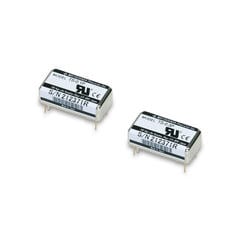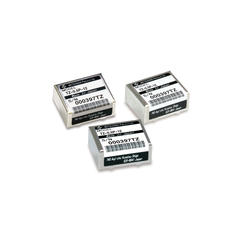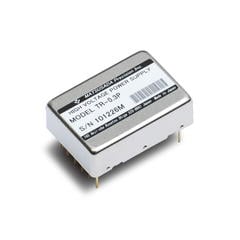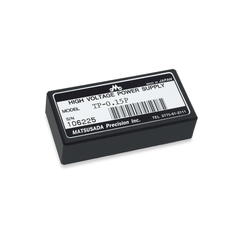An Avalanche Photodiode (APD) is a type of photodiode in a photodetector. An APD applies a high voltage to increase the photosensitivity compared to a normal photodiode. The application of a high voltage causes an avalanche phenomenon, which amplifies the signal. This makes it possible to obtain signals with high sensitivity even in weak light.
The greatest feature of Matsusada Precision's APDs is that they use a P-incidence structure. Most of the other companies use an N-incidence structure, and especially with short-wavelength light, the carriers are generated before the avalanche layer without reaching the depletion layer, so the avalanche effect is not 100% achieved and the sensitivity drops.
On the other hand, with the P-incidence structure used by Matsusada Precision, the generated carriers from the light incidents near the surface enter the avalanche layer with 100% certainty. There are no lattice defects in the crystal, resulting in a low-noise device. Furthermore, since a stable P layer can be formed, the variation in the avalanche voltage of each device can be suppressed.
APD product page is here. (Japanese)
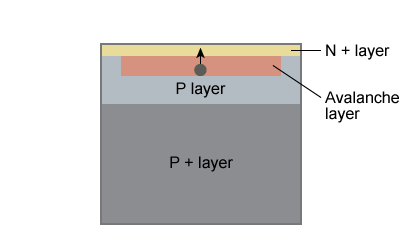
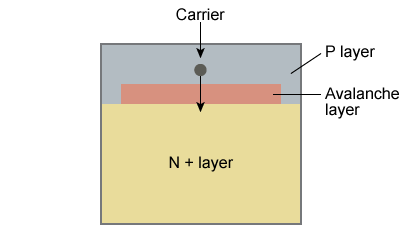
Example of Avalanche Photodiode (APD) Circuit
This circuit diagram is an example of a photon counting circuit using an APD. A high reverse bias voltage of up to about 300V is applied to the APD. The maximum voltage that can be applied varies depending on the APD, so check the specifications of the APD to be connected and make sure not to exceed the maximum value. Also, connect a current-limiting resistor for protection.
When a photon enters the APD, a current flows. This current is converted into a voltage signal by a current-to-voltage conversion circuit using a high-speed operational amplifier.
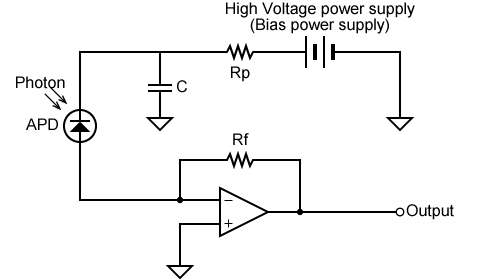
- Related words:
-
- Photodiode
- PIN Photodiode
- Photomultiplier Tubes (PMT)
- Photodetector
- Hybrid Photodetector
- Flat Panel Detector (FPD)




